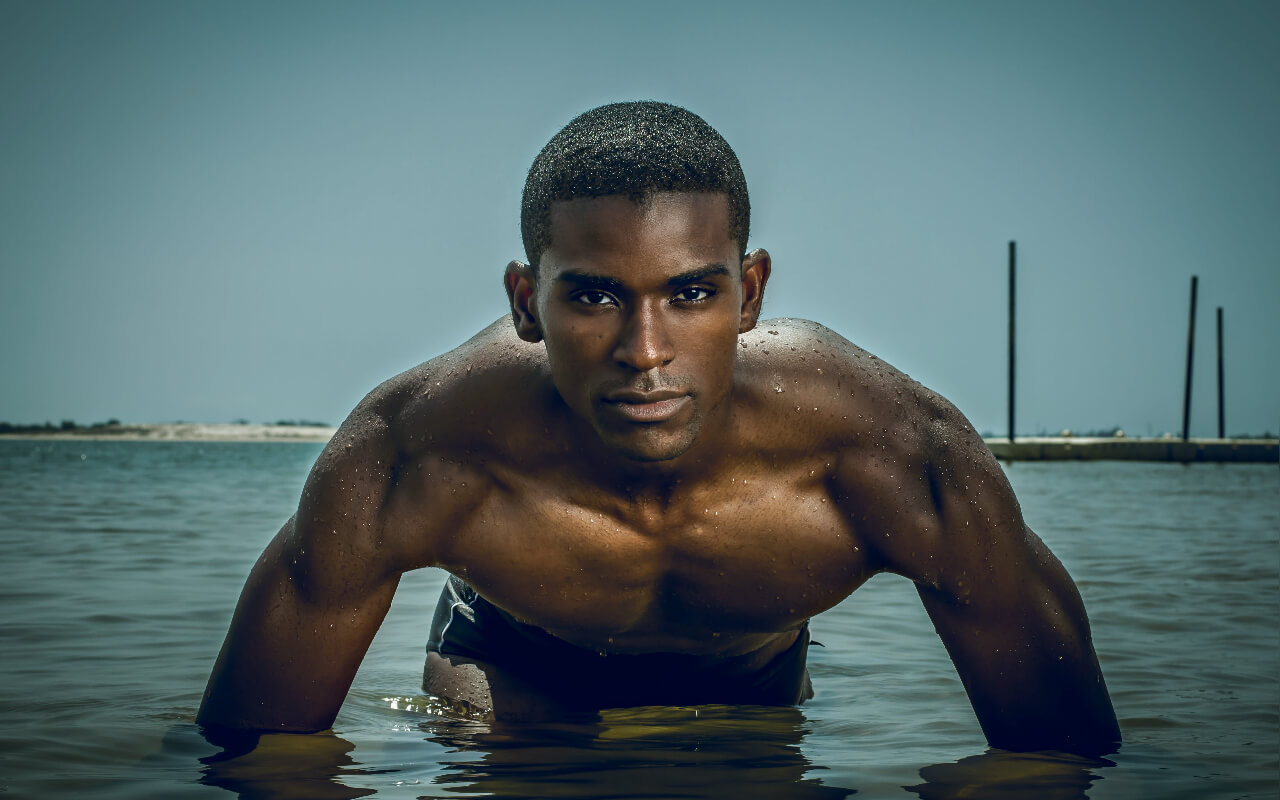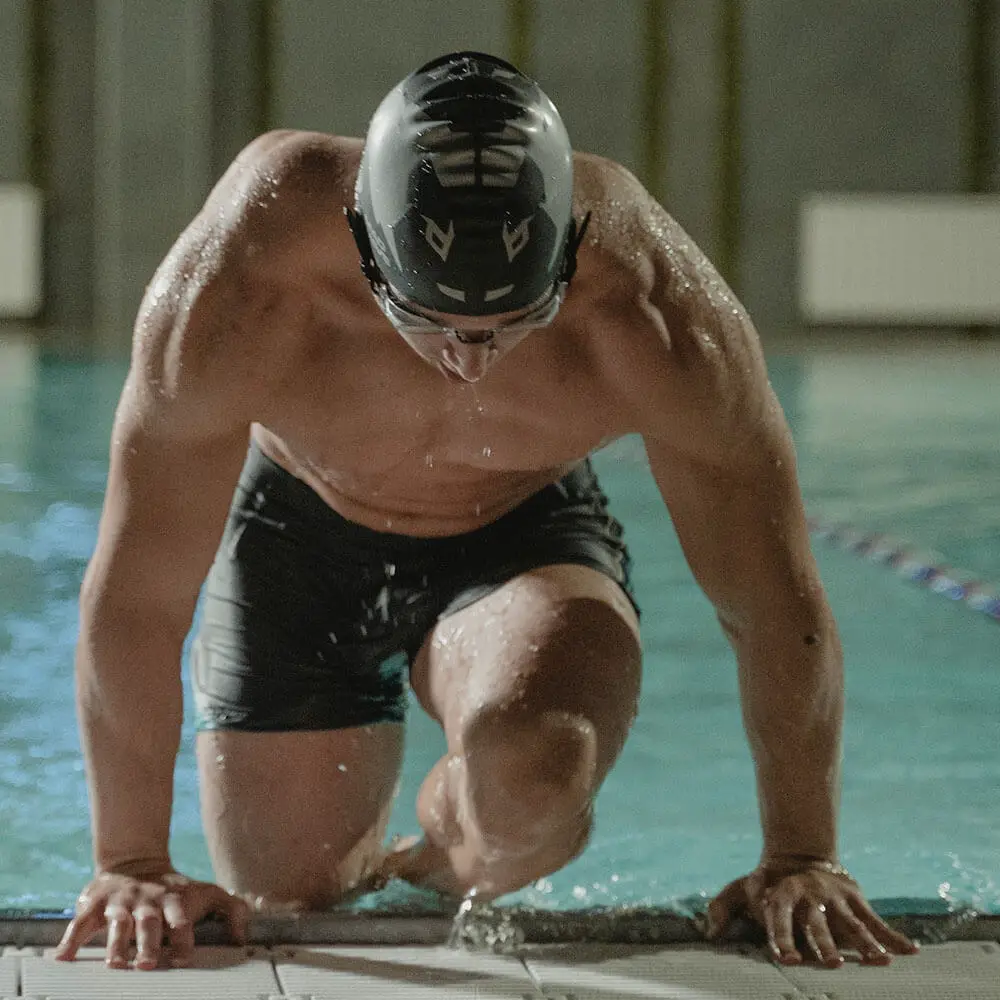Some gyms also have a swimming facility, so naturally if you’re already there, why not use both the pool and the gym in one trip?
If you’re wondering if it’s even possible to do both activities in one day without compromising your performance or risking injury, realistically it depends on your goals and how you approach your workouts.
Yes, it’s possible to do both activities on the same day. However, you must pick the order of the workouts and their intensity wisely. Some experts recommend doing strength training before swimming, while others suggest doing cardio before weightlifting to maximize fat burning and muscle building. Ideally, you have some rest time between workouts so as not to cannibalize your progress.
It’s also worth noting that combining swimming and gym workouts can be challenging, especially if you’re a beginner or getting older. You may need to adjust your diet, hydration, and recovery time to avoid fatigue, muscle soreness, and injury.
With that said, let’s get into why you might want to “swim and gym” on the same day, but not necessarily in that order.
Do These Activities Cannibalize Each Other’s Benefits?

This topic is crucial to get out of the way. Does swimming have a negative effect on your gym performance, and vice versa?
A study conducted in the 1980s suggested it did. The paper coined the term “interference effect” which suggested that one exercise interfered with the other, limiting one’s ability to develop strength and endurance at the same time.
There was even a meta-analysis of studies where the interference effect was mentioned which all supported the idea that concurrent training had a negative impact on building muscle and strength.
However, there were a few flaws for each of the studies in the meta-analysis. Some studies didn’t account for the participants’ fitness levels, and some studies had their participants perform the resistance training and cardiovascular training back-to-back in the same workout.
New research has indicated that if you split the cardio and weightlifting into separate workouts on the same day (giving the participants adequate rest in between), that it had no significant effect on their strength, i.e. the interference effect had no impact on strength and muscle gains, but may still affect explosive strength.
These findings held up across various forms of cardio, but researchers noted that running was more likely to cause an interference effect than, say, cycling.
So if explosive power was your primary concern, then you may have to consider splitting your swimming and gym sessions to separate days. Otherwise, as long as you have some recovery time in between your swimming and gym sessions on the same day, it will have minimal impact on your progress for both activities.
Benefits of Swimming and Going to the Gym on the Same Day
Swimming and going to the gym on the same day is an excellent way to get a full-body workout. Here are some benefits of combining swimming and gym workouts:
- Maximizes time efficiency: Combining swimming and gym workouts on the same day allows you to get the most out of your time at the gym. Instead of having to choose between one or the other, like the Old El Paso Taco girl says, why not both?
- Improves cardiovascular endurance: Swimming is an excellent cardiovascular exercise that can help improve your endurance and stamina. Having better endurance can help you not get winded so quickly on heavier or high rep sets.
- Targets different muscle groups: Swimming and gym workouts target different muscle groups in the body. By doing both on the same day, you can work out multiple muscle groups and have a true full-body workout.
- Active Recovery: Swimming can be an excellent active recovery workout between gym sessions or to cool down after a gym session. It can help reduce muscle soreness and aid in muscle recovery.
- Improved Flexibility: Swimming involves a lot of stretching and can help improve overall flexibility. This can help reduce the risk of injury and improve range of motion when you go to the gym.
Overall, combining swimming and gym workouts can provide a well-rounded workout routine that can help improve overall health and fitness. It is important to listen to your body and not overdo it, especially if you are new to swimming or weightlifting.
Challenges of Swimming and Going to the Gym on the Same Day
Swimming and going to the gym on the same day can be a challenge for many people. While it is possible to do both activities, it is important to keep in mind the potential challenges that may arise. Here are some of the challenges:
- Fatigue: Swimming and weightlifting are both demanding activities that require a lot of energy. Doing both on the same day can leave you feeling tired and fatigued, which can affect your performance in the second activity.
- Overtraining: Swimming and weightlifting both involve working your muscles, and doing both activities on the same day can lead to overtraining if both workouts were done at a high intensity level. Overtraining can lead to injuries, muscle soreness, and decreased performance.
- Increased risk of injury: Doing two intense workouts in the same day can increase your risk of injury. This is especially true if you are not properly warmed up or if you push yourself too hard.
- Time constraints: Swimming and weightlifting both take time, and doing both activities on the same day can be time-consuming. If you try to make up for this by cramming two workouts in the span of time you normally take to do one, then you’re just getting half the results for both.
It is important to listen to your body and not push yourself too hard when doing both activities on the same day. If you feel tired or fatigued, take a break and rest. It is also important to make sure you are getting enough rest and recovery time between workouts to prevent overtraining.
Tips for Swimming and Going to the Gym on the Same Day
Even if it’s okay to swim and go to the gym on the same day, there are some considerations you should keep in mind.
Time Management
The first step in managing your time effectively is to plan your schedule. Determine the best times to swim and go to the gym based on your daily routine and other commitments.
For most people, that basically means doing a workout before work, and another one after work. Planning ahead will help you prioritize your exercise routine and ensure that you can fit in both activities.
Another important factor to consider is the intensity of your workout. Depending on your fitness level, it may be challenging to do both activities on the same day. You may have the spirit, but you need to make sure your body can keep up with it.
For example, if you plan to do an intense strength training workout at the gym, you may want to do a lighter swim or cardio session to balance out your routine.
As you can see, time management is crucial when it comes to combining swimming and gym workouts. Ensure that you allocate enough time for both activities and stick to your schedule. If you are short on time, consider doing high-intensity interval training (HIIT) workouts, which can be completed in a shorter period.
Swimming or Gym First?
The order in which you choose to do your activities depends on your workout goals. Generally speaking, the second workout you do on the same day will be the one that suffers from performance issues, but maybe it won’t.
For example, if you want to focus on building strength, it may be more beneficial to do strength training at the gym first, followed by a swim to cool down and stretch your muscles.
On the other hand, if you want to improve your endurance and cardiovascular health, swimming first may be a better option, followed by circuit style training at the gym.
If you’re doing your workouts back-to-back, which can result in the interference effect mentioned earlier, at the very least your body will already be warm from the first workout so you can jump straight into the next workout quickly.
Recovery time is also an important consideration when determining the order of activities. As mentioned, you may not even notice any performance problems on the second workout if you rest up between workouts.
But to be safe, prioritize the workout that is more important to your goals first in case your body starts crashing on the second workout.
Listen to Your Body
Listening to your body is a crucial factor to consider when planning to swim and go to the gym on the same day. Here are some in-depth details on listening to your body:
- Pay attention to your energy levels: One of the most important aspects of listening to your body is paying attention to your energy levels. If you’re feeling fatigued, it may not be the best idea to do both activities on the same day. It’s important to prioritize rest and recovery to avoid overtraining and injury.
- Watch out for signs of injury: Another important aspect of listening to your body is watching out for signs of injury. If you experience pain, discomfort, or any other signs of injury during or after either activity, stop to take a break or seek medical attention if you feel pain. Ignoring the signs of injury can lead to long-term damage and hinder your progress towards your fitness goals.
- Adjust your routine as needed: It’s important to be flexible and adjust your routine as needed. If you’re feeling fatigued or experiencing any signs of injury, it’s okay to skip one of the activities or adjust the intensity of your workout. Prioritizing rest and recovery is essential for long-term success in your fitness journey.
- Be mindful of hydration: It’s essential to stay hydrated before, during, and after both activities to prevent dehydration and reduce the risk of injury. With swimming, many people don’t realize how dehydrated they are because they don’t notice they are actually sweating as much as if they were on the treadmill the whole time.

